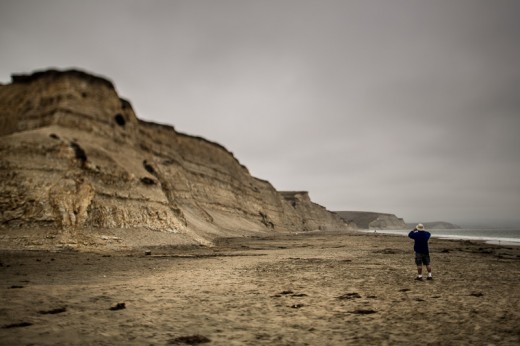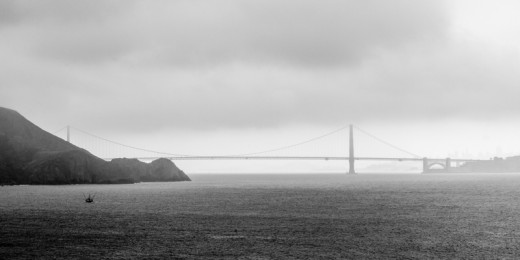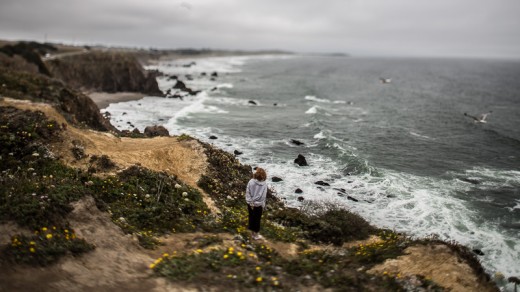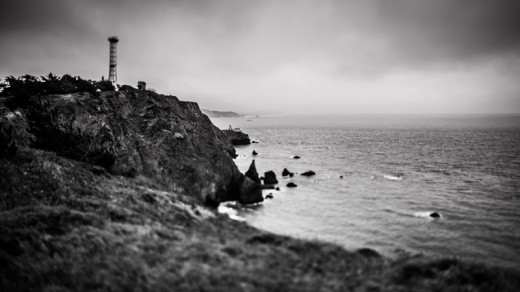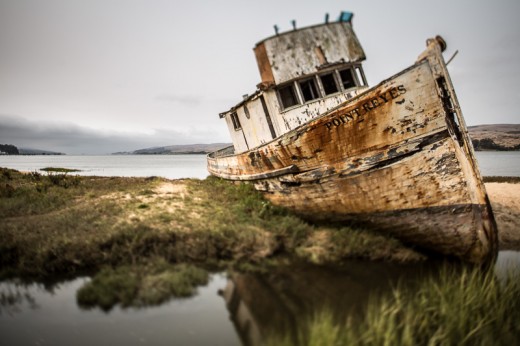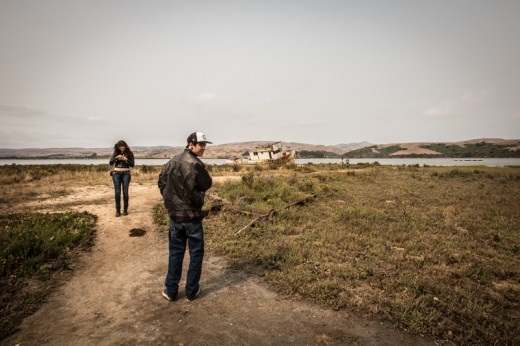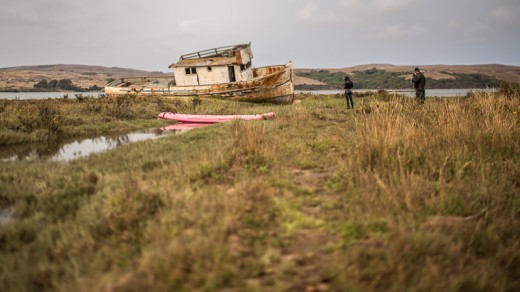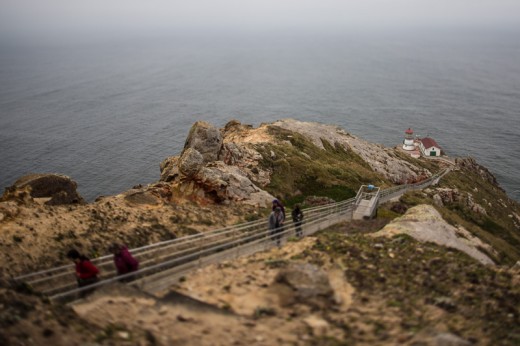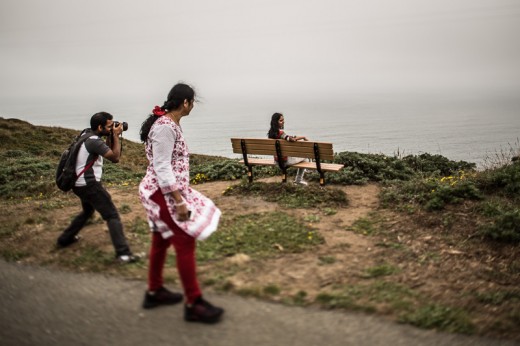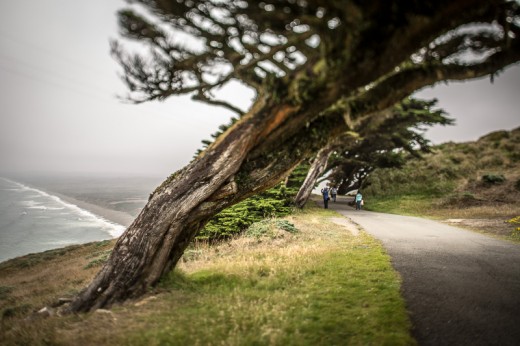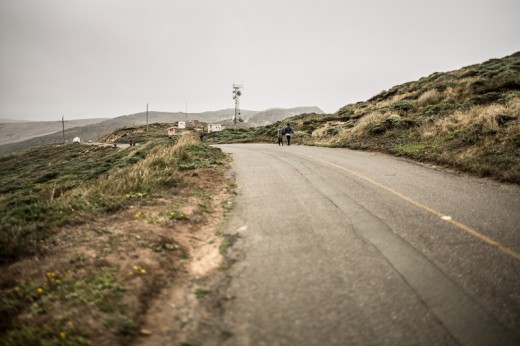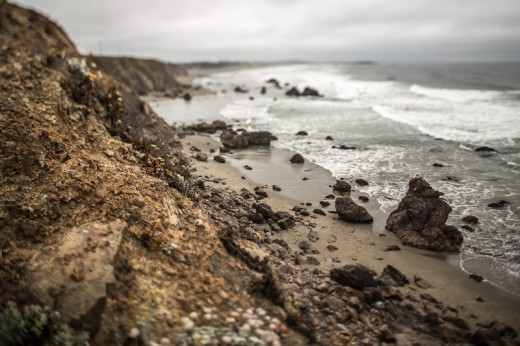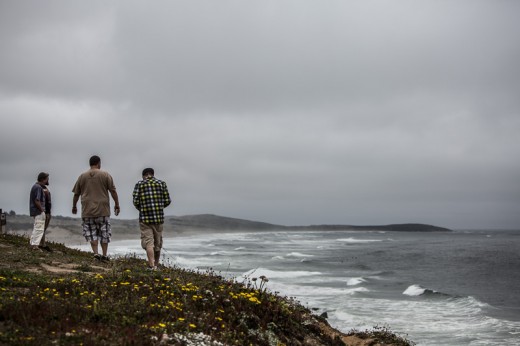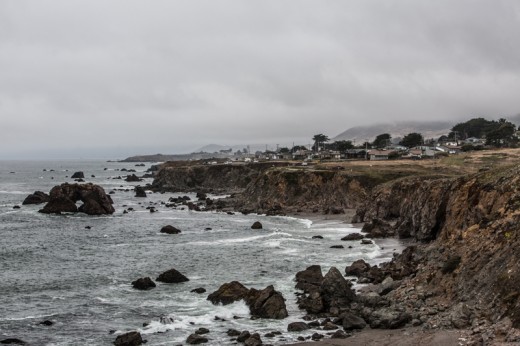Context and Scale
I just got back from shooting a wedding in California, and had some time afterwards to drive up the coast and see some of the sights around San Francisco. Over the years and my visits to the west coast, I have often struggled with the scale of the place–I have lived my whole life in the heavily forested and gently hilly Piedmont region of North Carolina–we have to drive a ways to get anywhere with anything resembling an unobstructed view. Sure, there are farms and lakes, the beaches and the mountains to provide some views, but it is nothing like the drama of the Northern California coast.
On this most recent trip, as I explored US-1 north of San Francisco and the Marin headlands, I wanted to communicate the beauty and mood of the places I saw, and also the context and the scale of them. When you photograph places to share with folks who might never have seen these places, you want to communicate what they’re like as best you can. Here, I want to try to illustrate some ways to do that, and to ruminate on technique and behavior.
While visiting the Marin Headlands and Point Reyes National Seashore, I was struck by the behavior of people, especially around the lighthouses and more popular vistas–they tended to fall into two rough categories. People either take photos of themselves with the chosen landmark in the photo with them–a sort of “been there, done that” photo; and the other group tended to try to get a photo without anyone in it, to capture the, I suppose, unadulterated beauty of the thing.
Starting with a trip to Washington, DC earlier this year, I started to intentionally include tourists in my photos–not so much in a voyeuristic way, but as a means to communicate social context as well as physical context. It was a way for me to note human behavior around iconic monuments. I am also, at heart, an observer of people as both a writer and a photographer, preferring to focus on people and human interaction with our environments both natural and wrought by hand.
In California, I found human and human-sized things useful in communicating scale–including people in my photos, in addition to my anthropological ambitions, also serves a very basic and practical function of showing folks how big something is. When one of my favorite fellow photographers, Scott Hotaling, started incorporating climbers into his mountaineering landscapes, I felt I could finally really appreciate the scale of his epic undertakings.
On the course of my trip, I made a stop in Inverness to finally see the infamous Point Reyes. Beached along Tomales Bay, the Point Reyes is slowly rotting away in a patina of aesthetically pleasing colors and textures–it’s no wonder why it’s a popular subject for photographers. From all the photos I’d seen of it, I imagined it out on the beach, at the very tip of Point Reyes, dramatic and broken, a warning of the tumultuous seas beyond and marking its namesake location. I expected isolation, loneliness, majesty.
Imagine my surprise, then, when I spotted the wreck from the road, and then pulled into Inverness. Parking in a grocery store lot, I found the wreck within a stone’s throw of the town of Inverness–there are some picnic tables, a well-worn path, and then the boat amongst some marshy, muddy banks. There was a fairly stead stream of photographers and visitors, though nothing approaching what you’d see at a tourist attraction. Though I felt compelled to commemorate the occasion with my own version of the picturesque scene, I found myself also wanting to communicate the context of the place, as no other photo I’d seen had done.
The wreck’s surroundings aren’t ugly, per se, but my experience was very surely dissonant from what I’d come to expect from the photos I’d seen. I don’t mean to suggest that there is anything wrong with all the photos that don’t communicate the more humble context of this place–just that I found the whole experience jarring because it was so different than the image I’d constructed in my head. I found the visitation of this “monument,” primarily by photographers, to be pretty interesting–folks seemed to be fulfilling some sort of spiritual pilgrimage. I was no exception.
Upon learning that I’d have some free time around the wedding on the west coast, I researched some places within a couple hour’s drive of San Francisco. One destination I chose was the Point Reyes Lighthouse, even though the results from a Google image search left me with fairly low expectations. You see, the lighthouse is out on the edge of the rocky point, down a long backbone of steps that descend along the ridge. Most photos of the lighthouse show it from above and very tightly framed, so that all you see is the lighthouse complex, the stairs, the rocks, and the Pacific Ocean stretching out beyond.
I don’t know that my photo is incredibly different in that respect, as the walkway had closed when I got there, and there aren’t many choices for views of the lighthouse. Still, my experience getting to this lighthouse–winding through miles of rolling coastal pastureland and fog and then walking along the cliffs with a view of the immense coastline and Pacific Ocean–was again very different than what I’d imagined.
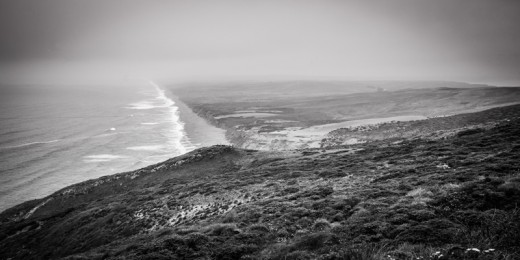
The web-size version of this is probably too small to be able to see the people on ridge in the midground.
In my case, I used a 24mm Tilt-shift lens to manipulate the image and play with the viewer’s perception of scale and context. I also tried to get a photo that would show a little more of the lighthouse’s surrounds, and took other photos to document the walk up to the lighthouse, with its unobstructed views of the vastness of the pasturelands and the sea.
I’ll close with some photos taken along US-1 and in the Marin headlands. Some feature people for scale, some were manipulated in-camera to question and play with scale, and others seek to communicate context, mood, and ambience.
Remember when you’re taking photos to show folks that have never seen the wonders you are experiencing, that you are handicapped in your limitation to a two-dimensional representation of a place. They can’t actually feel the chill wind blowing through your fleece, or smell the woodsmoke hanging in the air along the the roads along the coast or snaking through the magical redwood forests. They can’t hear the crashing of the waves or the mourning foghorn sounding at regular intervals. You can try to communicate all these things visually, if you can, but you’ll never be able to communicate the full experience of being there.

